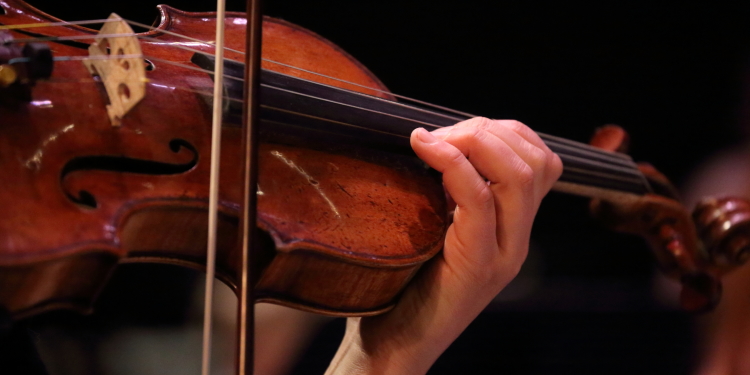At-home pursuits are definitely having their moment in the spotlight during the COVID-19 pandemic, which has resulted in extra downtime for many, and more time spent at home for just about everyone. We’re biased, of course, but we think that practicing an instrument at home is a great way to make the best of the situation. Making music serves as a creative outlet, provides a welcome break from the news cycle, and builds a variety of skills (perfect for those who feel the need to make even their downtime productive). To those of you looking to learn a new instrument or brush up on your skills, videoconferencing platforms like Skype and Zoom have made it possible to take private lessons without leaving your house. Many of our VSO musicians are offering remote lessons for a variety of instruments and styles—check out the full list here.
For professional musicians, hours spent practicing have been a normal part of life since long before any stay-at home orders came into effect. But because the pandemic has changed the landscape of the live music industry in just about every way, even practicing has started to look quite different than it did before, with new challenges and opportunities. Here’s how VSO musicians are adjusting to the new normal.
MAKING DO
Many shared studios and designated practice spaces are currently off-limits, but not everyone’s home is conducive to practicing. Distractions, lack of space, close neighbors, and noise ordinances can make residences less-than-ideal workspaces (though we have to admit, we love this particular distraction). What’s more, some musicians no longer have access to their instruments. For example, our Principal Timpanist Jeremy Levine, who also plays drums and percussion, has had to make do with a practice pad. He has kept up a steady practice regimen, but as he says, “I have had to be creative.”
MAINTAINING MOMENTUM
Without performances and rehearsals to serve as sources of motivation—and, frankly, hard deadlines—musicians have had to find their motivation elsewhere. Violinist Jane Kittredge has managed to maintain one weekly gig, live-streaming solo violin repertoire from her living room for church services. As she says, “That keeps me motivated, but I have to cross my fingers that a large truck doesn’t rumble by!”
In the absence of streamed performances, musicians can find motivation and accountability from one another. “For motivation, I’m swapping étude videos with a colleague of mine in Ohio,” says Principal Oboe Nancy Dimock. “Every day we send each other a video of an étude we worked on that day. It’s much harder to skip a day when I’m being held accountable!”
FINDING SILVER LININGS
To overcome the inconveniences, our musicians are focusing on the positive aspects of their current practice situations. As Jane says, “I now have more time to focus on technique (like scales) and lots of unaccompanied Bach.” Nancy is making use of this time to work ahead on a recital program that she’ll be performing next year, and “taking a lot of time to really learn the pieces slowly and carefully.” And though he can’t practice on his own instruments at the moment, Jeremy has found a silver lining: “The one good thing about using a practice pad is that it makes virtually no sound, so I can play at all hours and no one in my apartment building can hear me or cares.”

